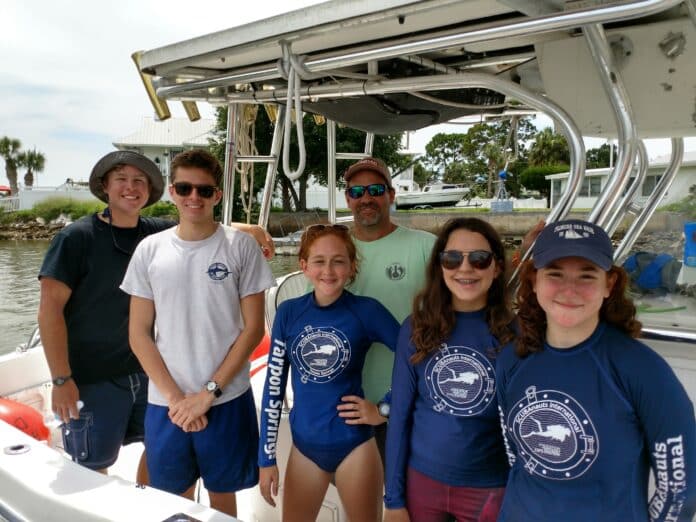During the weekend of July 7-8, 2018, Hernando County Aquatics Manager Keith Kolasa led a team of SCUBAnauts to conduct fish surveys at recently deployed artificial reefs. Everyone participating remarked about the unusual clarity of the water, which was ideal for diving and counting the new reef inhabitants.
Senior SCUBAnaut Noah Heskin reported that the team counted a “couple hundred bait fish” between three sites. He also reported counting a shark, a few sea turtles, and a lot of Gag Grouper, each approximately one foot long.
Since the sea creatures do not stay still, or line up be counted, the SCUBAnauts employ an organized method to move among the structures to gather accurate data.
The SCUBAnauts are a team of students between the ages of 12 and 18 who are interested in careers as marine scientists. The teens are already basic SCUBA certified upon joining SCUBAnauts, then undergo extensive training to become Science Divers, and eventually participate in marine research alongside professional scientists. Locally, SCUBAnaut chapters are in Tarpon Springs, Tampa, St. Petersburg and Sarasota.
The organization is privately funded, and has participated in coral transplants and other marine conservation efforts in the Florida Keys and at the Mote Marine Laboratory in Sarasota.
Katie Shoultz, who teaches SCUBA full-time is confident in the teens abilities. Kolasa and Shoultz describe the SCUBAnauts as a high-caliber, extremely capable and safety-focused group. Shoultz said, “(The training) is pretty demanding, primarily to maintain our status as a scientific diving organization … I feel good diving with these kids… They know what they’re doing.”
In August of 2017, 600 tons of concrete and other suitable material was delivered to the Bendickson reef, located about twenty miles west-northwest of Hernando Beach (28.52917° N, -82.97717° W). The Bendickson reef was established in April of 1995, when ten M60 Patton main battle tanks were submerged over an 11 acre area. It has since grown to a large arrangement of large concrete blocks and culvert pipes, with some smaller materials.
For SCUBAnaut information: http://scubanautsintl.org/

